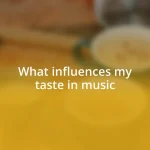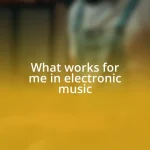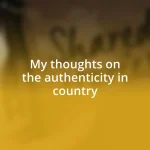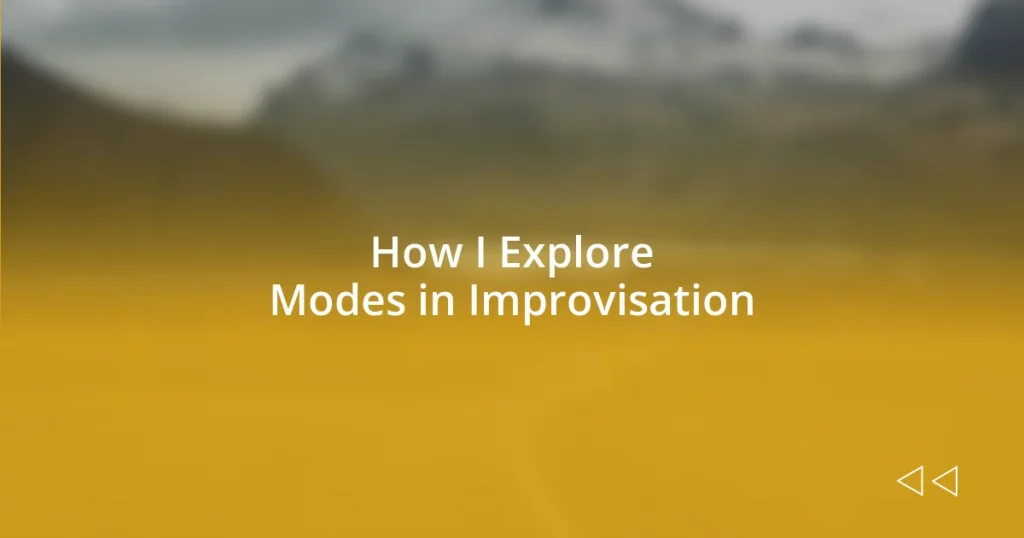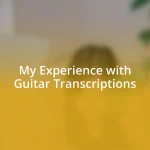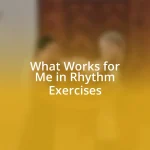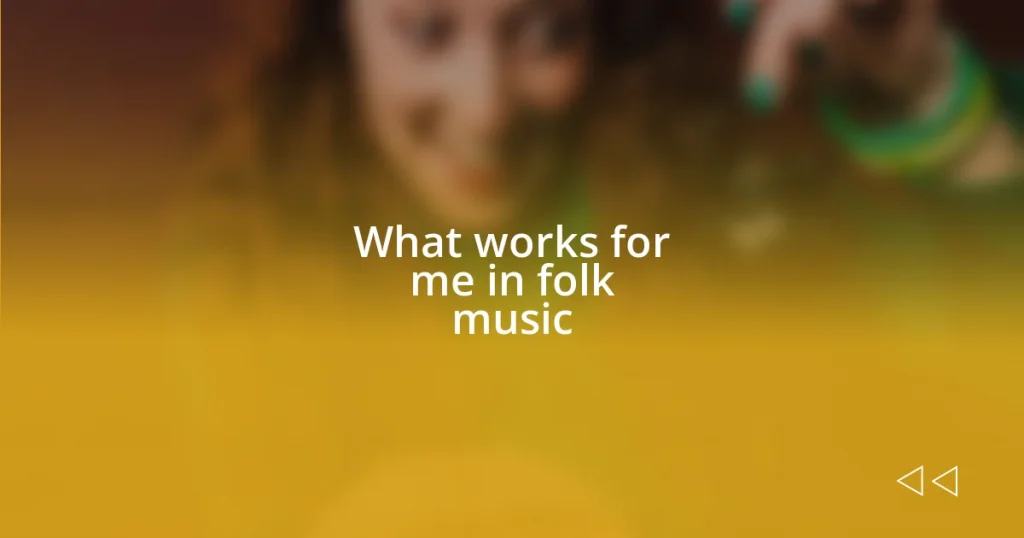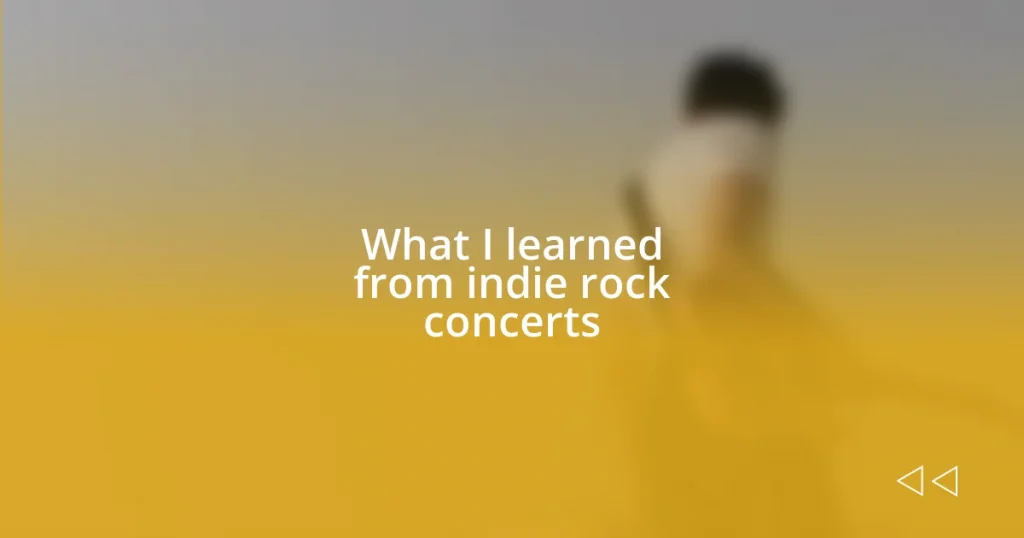Key takeaways:
- Understanding modes enhances emotional expression in improvisation, as each mode has unique characteristics that influence musical atmosphere.
- Techniques such as arpeggios, call and response, and rhythmic variation can elevate modal improvisation and keep listeners engaged.
- Challenges in modal improvisation include maintaining listener interest and avoiding reliance on familiar patterns, necessitating a deeper emotional connection with each mode.
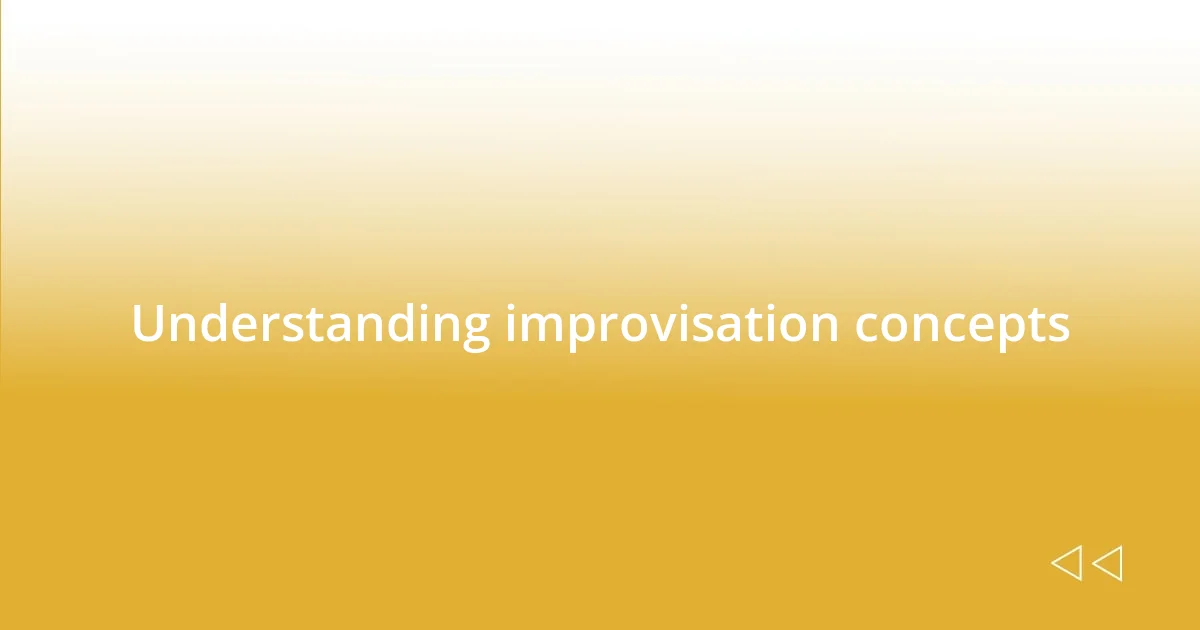
Understanding improvisation concepts
When I first delved into improvisation, I realized it’s not just about playing what comes to mind. Instead, understanding the underlying concepts—like scales, chord progressions, and dynamics—allows for more profound musical conversations. Have you ever tried to express a feeling through your instrument and felt that spark? That’s the moment when theory meets creativity.
One key concept that struck me was the importance of modes. Each mode carries its own flavor and emotional weight, giving musicians the tools to evoke specific feelings. I remember experimenting with the Dorian mode one evening and was pleasantly surprised by how it brought a sense of mystery to my playing—pure magic! How do you think modes influence your musical expression?
Exploring improvisation also involves being present in the moment and listening actively to fellow musicians. I’ve found that sometimes the most beautiful melodies arise from a spontaneous response to another’s note or rhythm. Isn’t it fascinating how a simple exchange can turn into a rich tapestry of sound? This interconnectedness is what elevates improvisation from mere play to a collaborative art form.
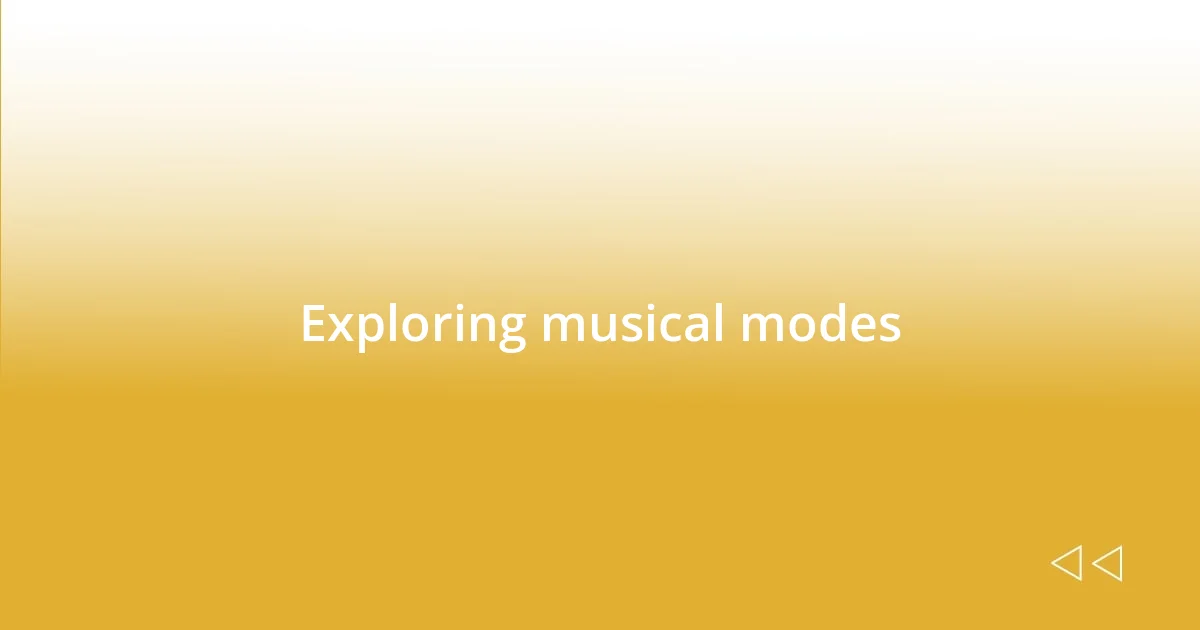
Exploring musical modes
Exploring musical modes opens an exciting door to emotive expression in improvisation. Each mode presents unique characteristics that can shift the atmosphere of a piece almost instantly. I recall the first time I played an A Mixolydian scale; it felt like a sunbeam cutting through a cloudy day. That bright, uplifting quality brought such an optimistic vibe to my performance, and I could literally see my audience light up with it.
As I ventured deeper into modes, I discovered that they can evoke diverse feelings beyond just happiness or sadness. When I experimented with the Phrygian mode, I noticed a haunting tension in my improvisation. This mode often invokes a sense of longing, which can be captivating. It reminded me of that time I played at a cozy café, and the atmosphere turned introspective, encouraging a shared moment of reflection with listeners.
Modes also interact with each other in fascinating ways. I often blend the Dorian and Mixolydian modes to create captivating transitions that keep the music dynamic. This interplay allows me to navigate different emotional landscapes seamlessly. Have you found ways to combine modes in your improvisation? There’s so much potential to explore, and it continually inspires me to create something fresh and genuine.
| Mode | Character |
|---|---|
| Dorian | Mystery and intrigue |
| Mixolydian | Brightness and optimism |
| Phrygian | Longing and tension |
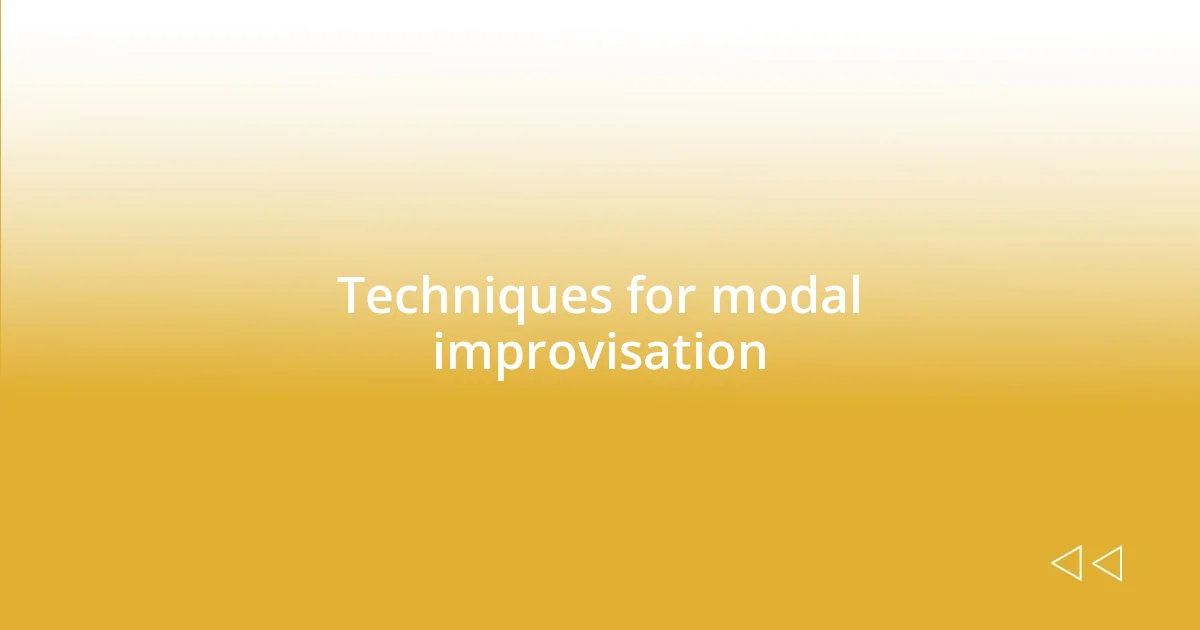
Techniques for modal improvisation
When it comes to techniques for modal improvisation, I find that utilizing different approaches can really enhance my creative expression. One method that stands out to me is the use of arpeggios. These allow for a melodic exploration of the underlying chord tones in a mode, creating a sense of movement. I fondly remember improvising an arpeggio pattern over a static chord, and it felt like painting with sound, as the notes cascaded over the harmony.
Here are some techniques I often use for modal improvisation:
- Target Notes: Focus on specific notes in the mode that coincide with the chord tones.
- Call and Response: Engage in a dialogue with other musicians by mirroring and responding to their ideas.
- Rhythmic Variation: Change up your rhythms to add fresh excitement and keep listeners engaged.
- Stepwise Motion: Use small, connected intervals to create melodic lines that maintain the modal character.
- Chromaticism: Adding passing notes can bring tension and color to your improvisation without losing the modal essence.
I also often play around with dynamics, which transforms the emotional impact of a phrase. During one session, I experimented with soft, delicate playing in the Aeolian mode, gradually building intensity. This contrast evoked such a palpable sense of yearning; I could feel the energy in the room shift as my audience leaned in closer. Those moments remind me just how powerful our musical choices can be. What techniques do you lean on during your improvisational journeys?
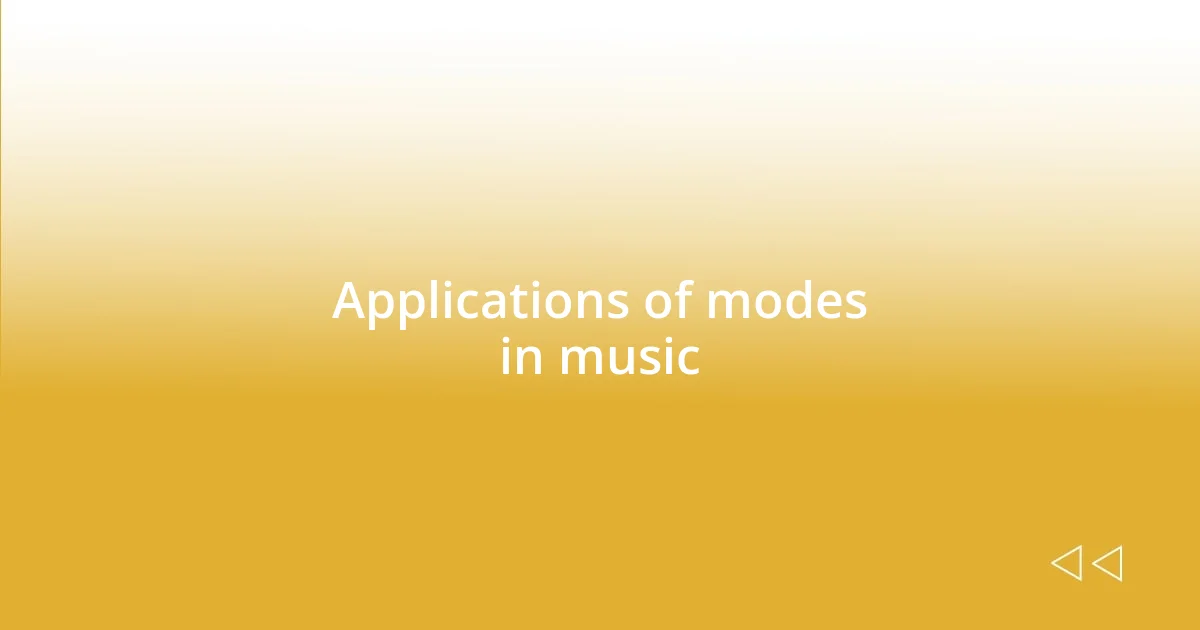
Applications of modes in music
When exploring the applications of modes in music, I’ve found that certain modes can significantly influence the genre and style of a piece. For instance, I often use the Dorian mode in jazz and funk settings because its distinct sound encourages creative improvisation. One time, while jamming with a band, we effortlessly transitioned from a minor chord progression into the Dorian mode, instantly elevating the energy. It was fascinating to witness how the groove shifted, inviting everyone to respond with their own rhythmic nuances.
Moreover, modes can also serve as a foundation for composition. When I composed a piece using the Phrygian mode, the dark, exotic flavor provided a rich canvas that colored every note I played. I still remember the enchantment of weaving a narrative through that haunting sound, creating a musical journey for the listeners. It’s as if the mode itself told a story, leaving the audience with a lingering sense of mystery. How have you utilized modes in your own compositions?
Another rewarding aspect of using modes is the emotional depth they can add to live performances. I recall playing an outdoor gig where I casually explored the Aeolian mode during a slower section. As I allowed the notes to linger and resonate, the authenticity of that moment resonated deeply with the crowd. It’s those subtle shifts in modal applications that create memorable experiences—connecting both the musician and the audience in profound ways. Have you experienced that magical feeling when a mode truly clicks with you and your audience?
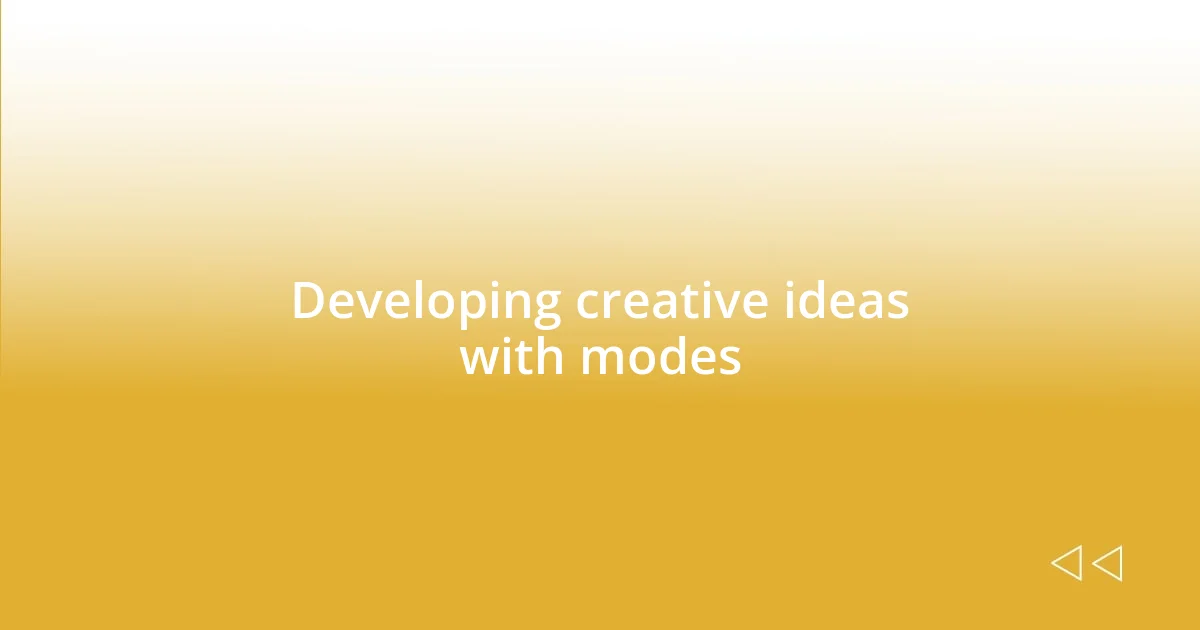
Developing creative ideas with modes
When developing creative ideas with modes, I often find myself diving deep into the emotional nuances each one can convey. For example, I love experimenting with the Lydian mode, which has this uplifting, ethereal quality. I vividly remember a moment during an open mic night where I played a soaring melody in Lydian. The audience responded with such warmth; it felt like I was elevating their spirits with every note. Have you ever experienced that sense of connection when a mode resonates in a unique way?
Taking a closer look at specific intervals in the modes can also spark new ideas. One day, while improvising in the Mixolydian mode, I noticed how the flattened seventh accentuated the tension in my phrases. I began to play around with slides and bends, which made the notes leap out with a playful energy. That discovery not only reinvigorated my approach but showed me how small changes could lead to fresh creative pathways. What peculiar twists in your improvisation have opened doors to new sounds?
Moreover, sometimes I use modes to create contrasting sections in my performances, which can dramatically enhance the overall experience. I recall a time during a jam session where I shifted from the serene qualities of the Ionian mode to the intensity of the Locrian. The immediate contrast drew listeners in, making them more engaged with the unfolding story. It’s intriguing how the interplay between different modes can transport both the musician and the audience. Have you ever experimented with such transitions in your musical journey?
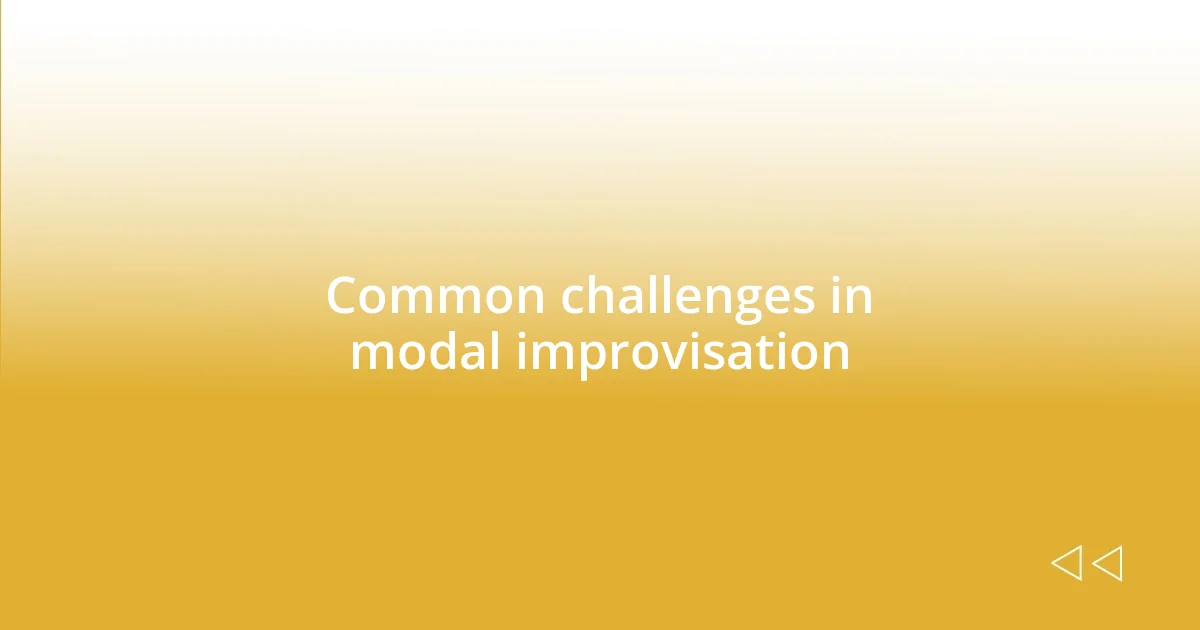
Common challenges in modal improvisation
Navigating modal improvisation comes with its own set of hurdles. One challenge I’ve often encountered is maintaining listener interest when exploring less familiar modes. I remember jamming with friends, transitioning into the Locrian mode, and feeling a wave of uncertainty as the dissonance sometimes left my fellow musicians unsure of where to go next. Have you found yourself in a similar situation, grappling with the unique flavor of a mode while trying to keep the vibe alive?
Another aspect that can trip me up is the tendency to fall back on familiar patterns. For instance, while improvising in the Dorian mode, I would frequently revert to the same licks I always play, missing the opportunity to creatively explore the modal landscape. It took a conscious effort to break out of that loop, experimenting with unexpected intervals and phrasing. Have you noticed those automatic habits in your own playing, and how have you overcome them?
Additionally, the emotional connection with each mode can be tricky. I vividly recall a moment during a solo performance, where I attempted to convey the depth of the Phrygian mode, but my notes felt mechanical and uninspired. It was a learning experience, prompting me to dive deeper into understanding how to infuse my playing with genuine emotion that resonates with the audience. How do you ensure that your improvisation carries the emotional weight of the mode you’re exploring?
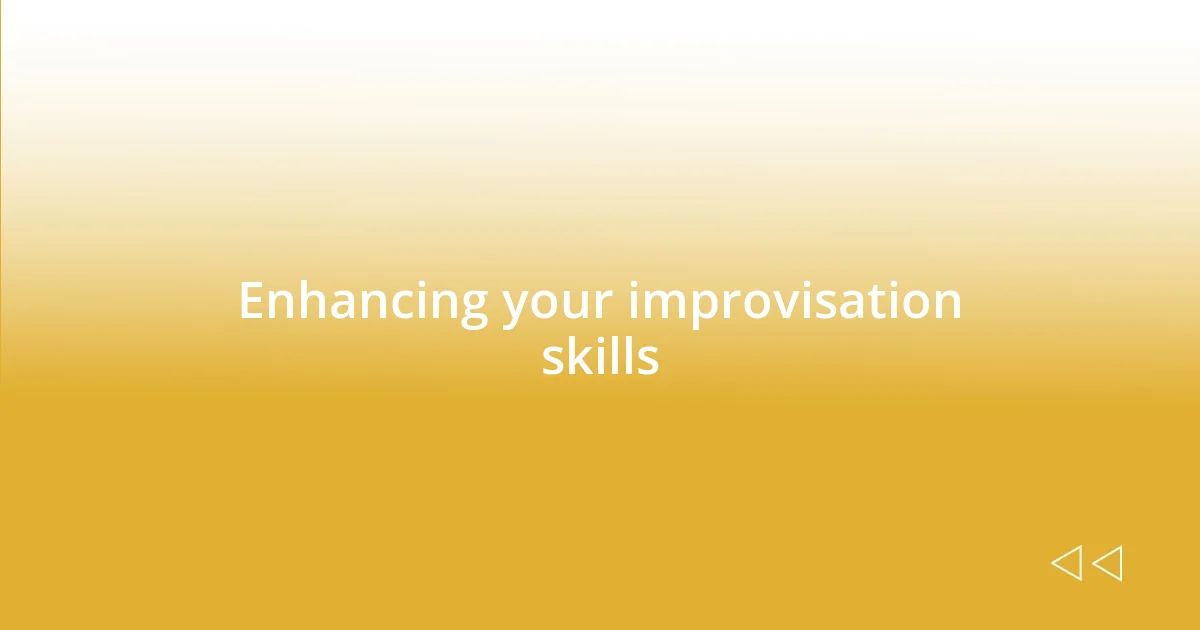
Enhancing your improvisation skills
Expanding your improvisation skills requires a willingness to step outside your comfort zone. I remember a late-night jam session where I decided to experiment with the Aeolian mode, which has a more somber character. As I played, I felt the room shift; the mood deepened. It reminded me that embracing a mode’s unique emotional palette could unlock hidden depths in my playing. Have you ever pushed your limits and found unexpected beauty in modes you rarely use?
Another useful approach is to incorporate various rhythmic patterns into your improvisation. One time, while jamming in Phrygian, I started mixing syncopated rhythms into my phrases. The result was electrifying! What I discovered was that these shifts didn’t just spice up the sound; they created a dynamic tension that kept both me and the audience engaged. How do you approach rhythm in your improvisations?
Lastly, capturing the essence of a mode is key to expressing yourself authentically. I’ve often found it beneficial to immerse myself in music that features the modes I wish to explore. For instance, listening to a Flamenco-inspired piece in the Phrygian mode sparked a newfound fascination in me. The intricate melodies and emotions conveyed helped me understand how to infuse that authenticity into my own playing. What resources do you turn to when trying to deepen your understanding of a mode’s character?


